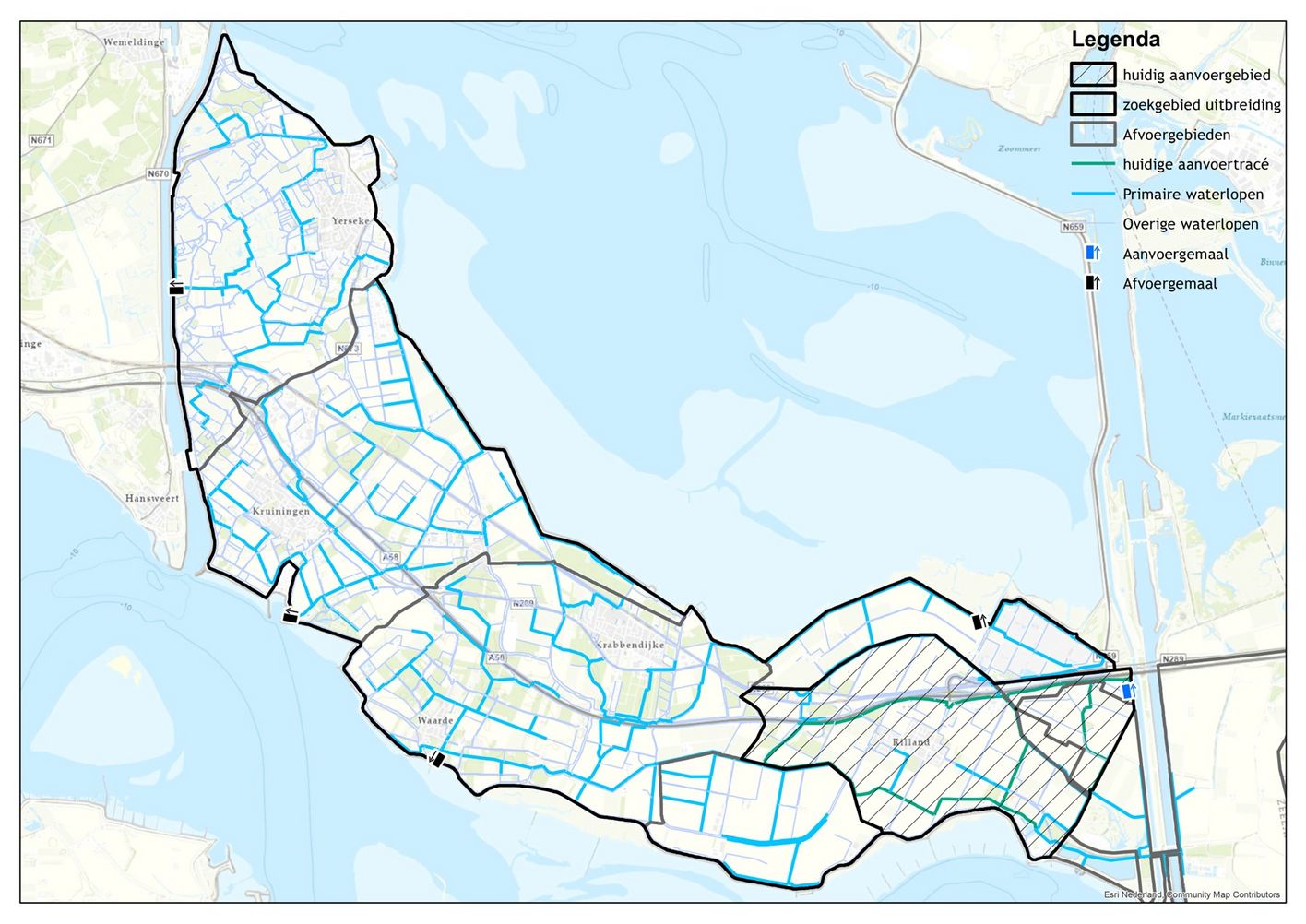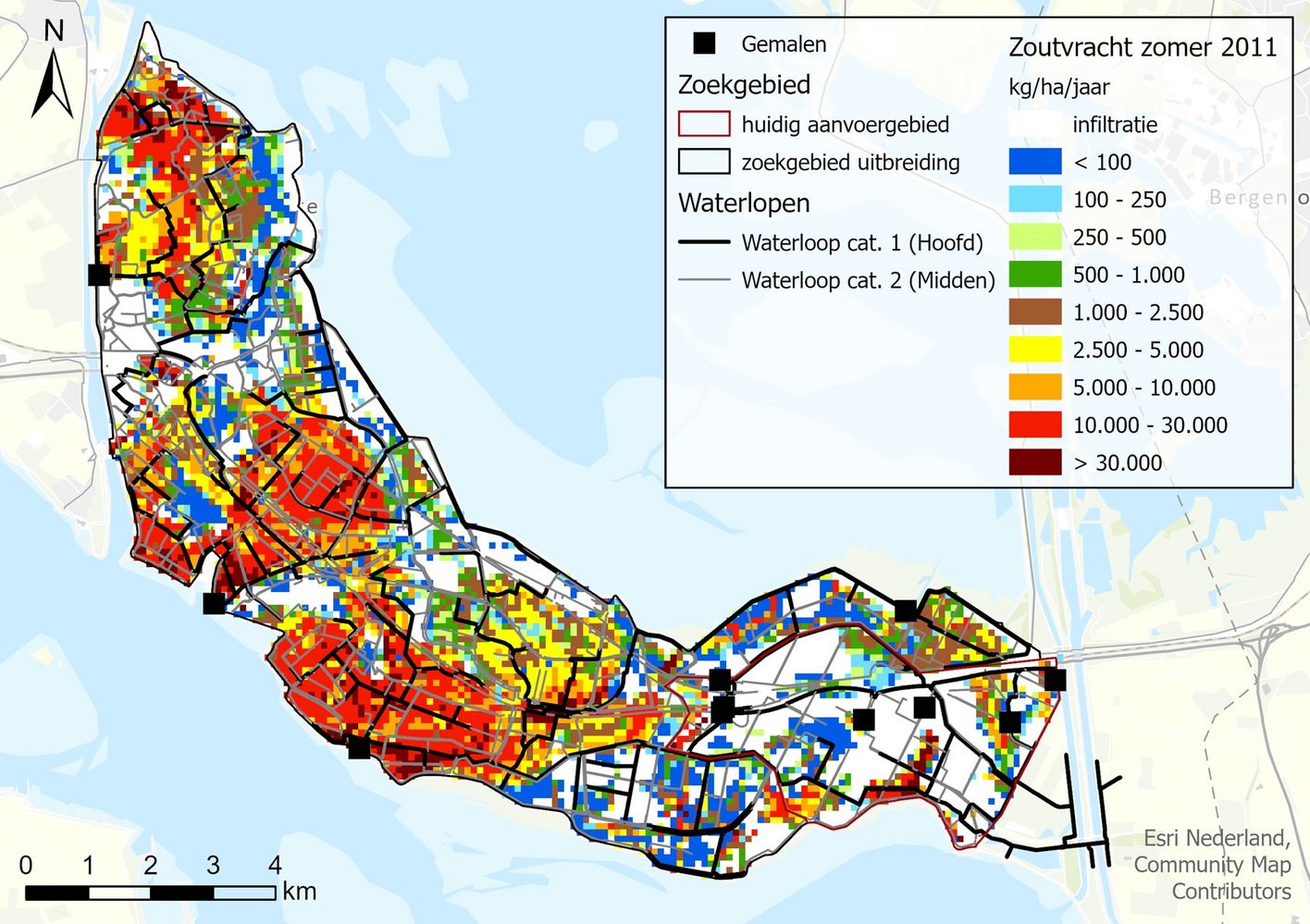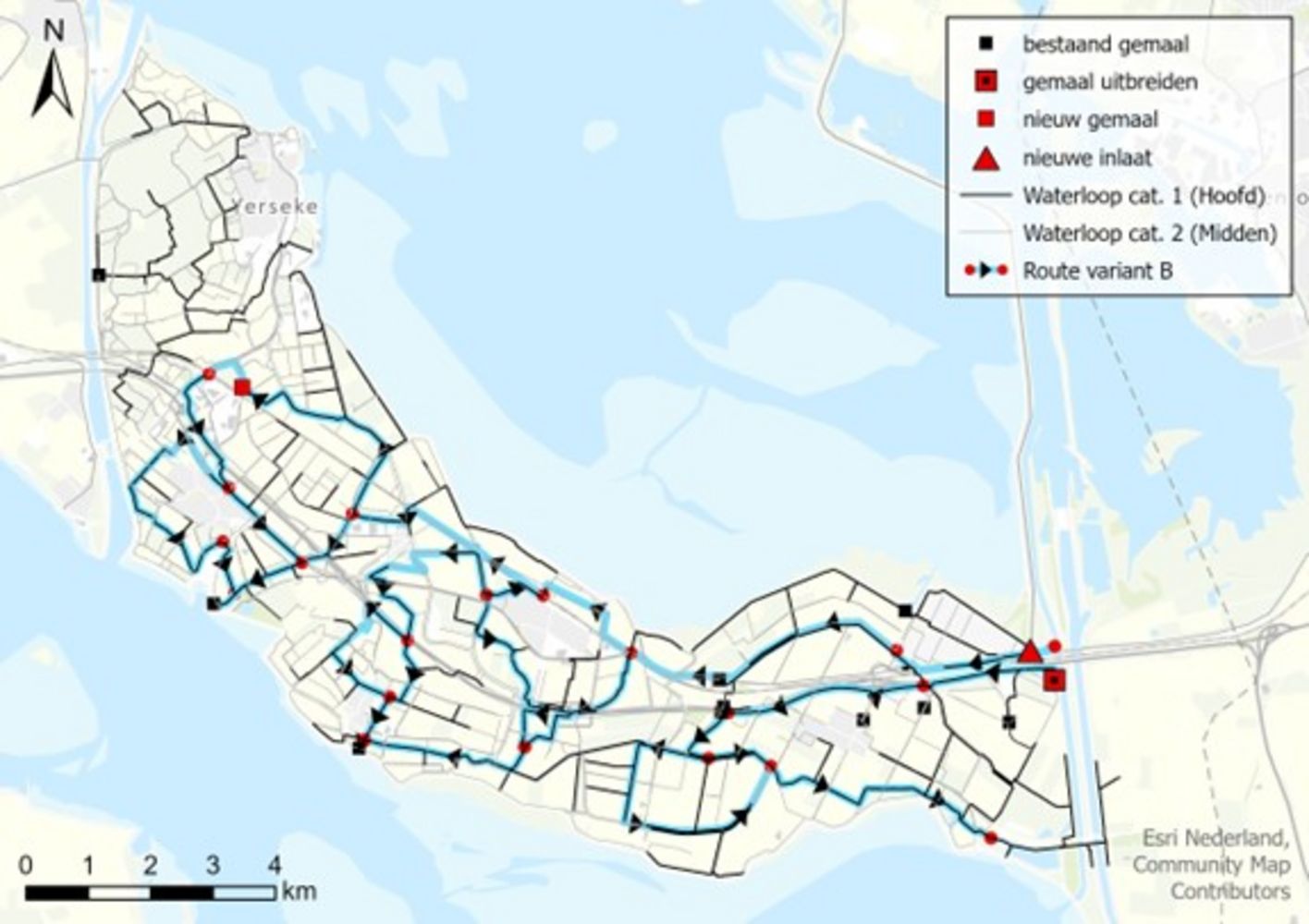Published on 30 August 2022
Expansion of the fresh-water supply in Zuid-Beveland: future for the agricultural sector
Zuid-Beveland’s fruit and flower growers and livestock and arable farmers are facing increasing water shortages due to the dry summers in recent years. The Scheldestromen Water Authority commissioned Witteveen+Bos to investigate how a robust fresh-water supply can be achieved in this part of Zeeland, which would help ensure future stability of the agricultural sector.
In the current situation, only a small proportion of landowners and users in Zuid-Beveland have access to fresh water. In times of drought, fresh water is released into Reigersbergsche Polder and Eerste Bathpolder via the Volkerak Zoommeer.
A project group consisting of the Scheldestromen Water Authority, the regional government of Zeeland and specialists from Witteveen+Bos assessed how to expand the fresh-water distribution area by channelling water from the Bathse Spuikanaal to the Zuid-Beveland-Oost area.
Part of the assignment was to investigate the available options and included the creation of a draft design. During the research phase, representatives from the agricultural sector were consulted on multiple occasions. The draft design was then presented and explained to the various stakeholders during an information evening in the area.
New inlet construction
Two possible variants were defined during the study, with the preferred variant involving expansion of the existing water-supply system being further elaborated. The existing supply system in Reigersbergsche Polder supplies fresh water from the Bathse Spuikanaal, which is part of the Volkerak Zoommeer. The new design includes the addition of Zimmermann and Frederica Polders to this supply area. This means expanding the current water-supply system, including the existing pumping station.
In addition, a new inlet construction will be used on the northern side of the motorway and railway line, under the primary flood defences. This will enable water to follow a natural gradient and provide the drainage areas of Van der Graaf, Waarde, Glerum and part of Yerseke Moer with fresh water.
From high to low
Central to determining the best solution was the design principle ‘as much as possible from high to low and from fresh to salt’. Allowing water to flow from high to low makes maximum use of the natural gradient. This requires less energy and fewer expensive pumping installations to be fitted. And this in turn results in lower operating costs. Supplying water from fresh water to saltwater will help the water supply to remain fresh for as long as possible and significantly increase the area of agricultural land that can be irrigated.
Added value in a broader perspective
Extending the fresh-water distribution area to Zuid-Beveland-Oost also has a positive impact in terms of water management and ecology. Additional storage capacity is created in the waterways, reducing the risk of flooding in times of extreme rainfall. Taking into account the objectives of the Water Framework Directive when widening waterways also contributes to the ecological water quality. Another possibility is the potential for supplementing future water supplies with fresh rainwater from clean paved and asphalted surfaces.
From design to practical use
During the presentation of the final report, local agricultural entrepreneurs voiced their enthusiasm for the proposed design and the added value that the fresh-water network would bring to their businesses. The Scheldestromen Water Authority and ZLTO will now use the research report, conclusions and design to discuss the follow-up and opportunities for realisation with the stakeholders.
Share this page
More information



